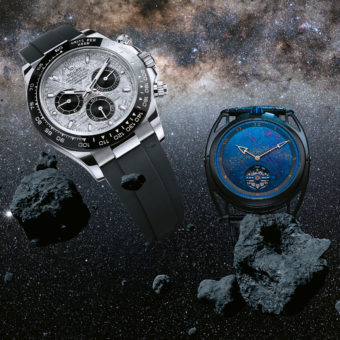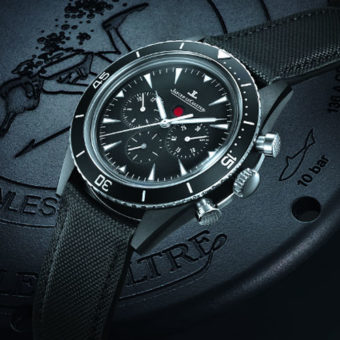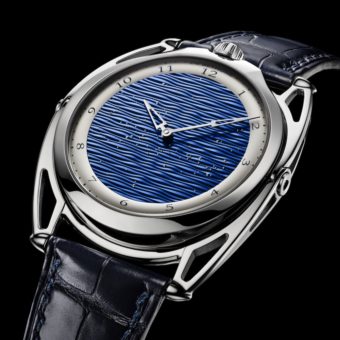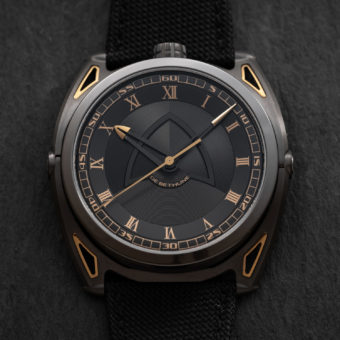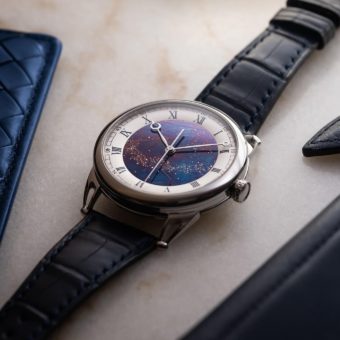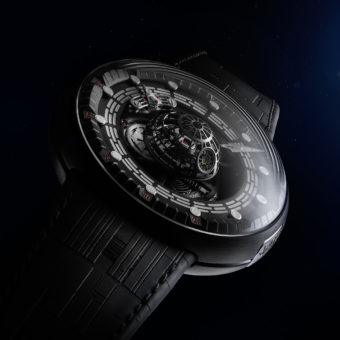
For the past several years, De Bethune has focused its research efforts on developing super-high-frequency escapements. Currently, most escapements operate at 18,000 to 36,000 vph (2.5 to 5 Hz). In 2006, De Bethune demonstrated an experimental 72,000 vph (10 Hz) silicon escapement. Their latest efforts involve engineers, watchmakers, and a physicist, all working to develop a next-gen escapement powered by non-mechanical forces.
As De Bethune explains in its latest press release, taking traditional mechanical escapements beyond 10 Hz is not feasible due to reliability issues arising out of mechanical resistance and basic wear-and-tear problems.
To advance the science of mechanical timekeeping, De Bethune is employing some non-traditional forces, namely synchronization between an acoustic resonator and a magnetic escapement rotor, operating in a mechanical watch. De Bethune has dubbed its discovery Horological Résonique, and it is making its research available to the watchmaking community to promote new thinking about “mechanical harmony.” The work has taken two years under the direction of Denis Flageollet, working with physicist Siddharta Berns in the De Bethune laboratory.
Using simulations, De Bethune has developed several prototypes with oscillating frequencies ranging between 200 and 1000 Hz (1,440,000 and 7,200,000 vph). On December 8, De Bethune demonstrated a 926 Hz oscillator (6,667,200 vph). De Bethune says its silent system is “free of any balance wheel, balance spring or traditional escapement” and is composed of a limited number of moving parts. The design “promises in due course to achieve the highest accuracy while eliminating the usual constraints such as lubrication, wear, and resistance” claims De Bethune.
The brand says that more information about résonique will be available on January 15 at www.debethune-resonique.com.


